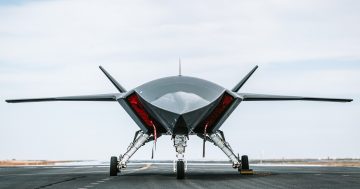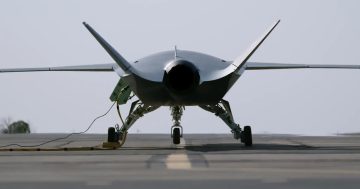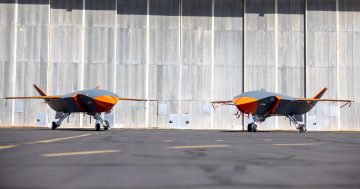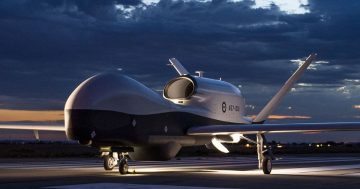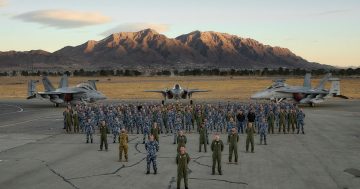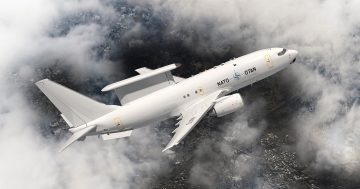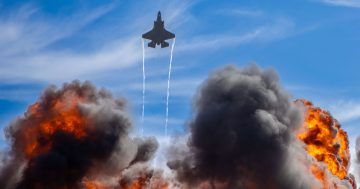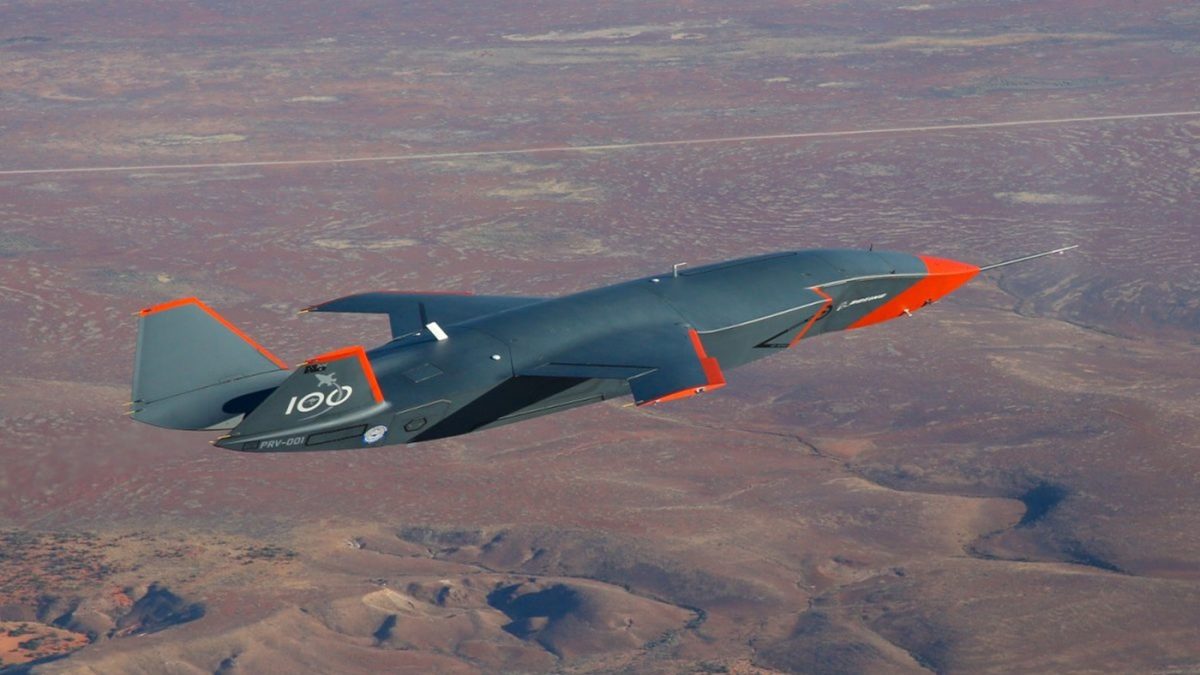
The Australian-designed Boeing MQ-28 Ghost Bat. Photo: Boeing Defence Australia via ADF.
Loyal Wingman and Skyborg are just two of the evocative names given to US Air Force programs attempting to develop an uncrewed aircraft that will accompany crewed systems in combat.
The US Air Force Research Laboratory’s (AFRL) Skyborg program has, over the past few years, funded demonstration efforts and the ”art of the possible” in uncrewed combat systems.
But that’s not where it started. Skyborg itself was an evolution of the Pentagon’s 20-year, stop-start-stop efforts to develop such systems via various iterations through the USAF and US Navy, and their respective research divisions.
And now there’s a follow-on to Skyborg. Enter the Collaborative Combat Aircraft (CCA), the latest effort to realise a production uncrewed combat aircraft.
The concept of the CCA is for a low-observable – i.e. stealthy – combat-capable or sensor-laden air vehicle that costs about one-third that of a crewed aircraft such as the Lockheed Martin F-35A or Boeing F-15EX.
The original concept of the Loyal Wingman was to protect higher-value aircraft such as refuelling tankers or command and control aircraft and possibly be controlled by those aircraft. But this has evolved to where these systems potentially have the range and carrying capacity to fly autonomously well ahead of crewed bombers or fighters to, in effect, clear a path through enemy defences.
The uncrewed system will be employed to carry additional weapons, optical or electronic sensors, or other ”effects” such as electronic attack systems inside enemy integrated air defence systems where it will likely be too risky to operate crewed aircraft.
These aircraft will be far more than just ”drones”. Whereas such systems previously were designed to attack pre-determined fixed targets or had a human-in-the-loop controlling them from a ground station, recent advances in artificial intelligence will now make it possible for these aircraft to search for, locate, discriminate and, if necessary, attack targets of opportunity.
Some of the concepts tested so far are for uncrewed systems that can take off and land like a conventional aircraft and, in essence, fly with or ahead of a larger strike ”package” of aircraft to and from the target.
Other concepts are for smaller systems that may be carried by transport or bomber aircraft and employed only when required. And then others may see the uncrewed aircraft itself carry and employ even smaller uncrewed systems.
On 24 January, five companies were selected by the USAF to build prototype systems that would lead to a rapid development program for production.
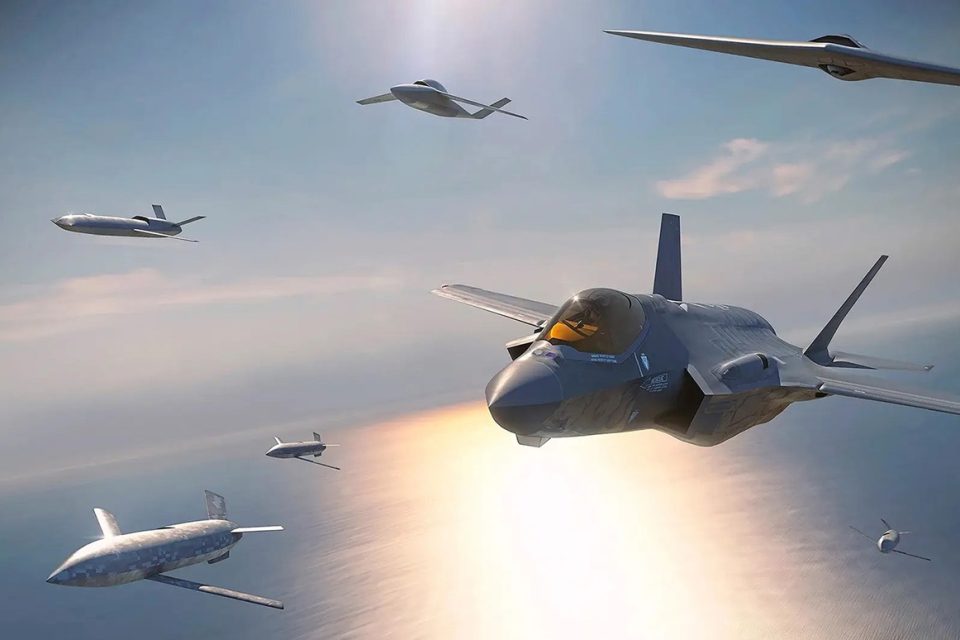

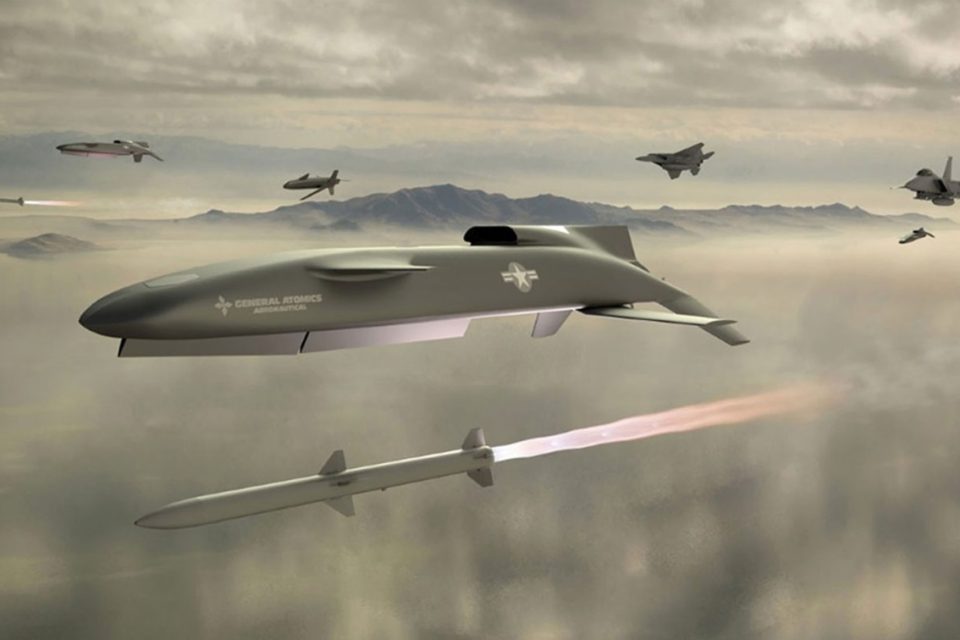



The companies – Boeing, Lockheed Martin, General Atomics, Anduril and Northrop Grumman – will develop and demonstrate their designs, after which it is expected two or three will be shortlisted for further development before one is eventually selected.
Boeing’s design is believed to be based on the Australian-designed MQ-28 Ghost Bat, which the company developed for the Royal Australian Air Force’s Loyal Wingman demonstration program and for which it has been contracted to build at least 10 air vehicles so far.
While the RAAF has gone quiet of late on how that program is proceeding, two Ghost Bats are believed to have been delivered to the USAF in late 2022 for further testing and development, and have been used to demonstrate their ability to be controlled in flight from crewed aircraft.
Lockheed Martin has shown several conceptual teaser images of various uncrewed combat aircraft designs over the years – many of them tailless flying wing-like air vehicles like its operational uncrewed RQ-170 Sentinel reconnaissance aircraft.
General Atomics is believed to have proposed a family of systems based around its ‘’Gambit’’ design, which uses a common ”core” that can be reconfigured with different flying surfaces and sensors depending on the system’s planned mission.
General Atomics has also shown its ”Longshot” proposal, which can be carried by large fighters and carry long-range missiles or standoff bombs itself.
Anduril is the newest player in the market, with its Fury system causing a stir in recent months.
And Northrop Grumman will no doubt draw upon the legacy of its ownership of aircraft design house Scaled Composites and the successful US Navy X-47B UCAS program – which a decade ago successfully demonstrated its ability to take off and land on an aircraft carrier and be refuelled in mid-air – in developing its next-generation system.
The USAF plans to spend $US392 million ($A598m) on the CCA program in 2024 and $US5.8bn ($A8.85bn) over the next five years.
With its enhanced link to the US through the AUKUS construct, the RAAF will likely keep a close eye on the CCA program as it progresses, and possibly take on a cooperative development role.
Original Article published by Andrew McLaughlin on Riotact.


